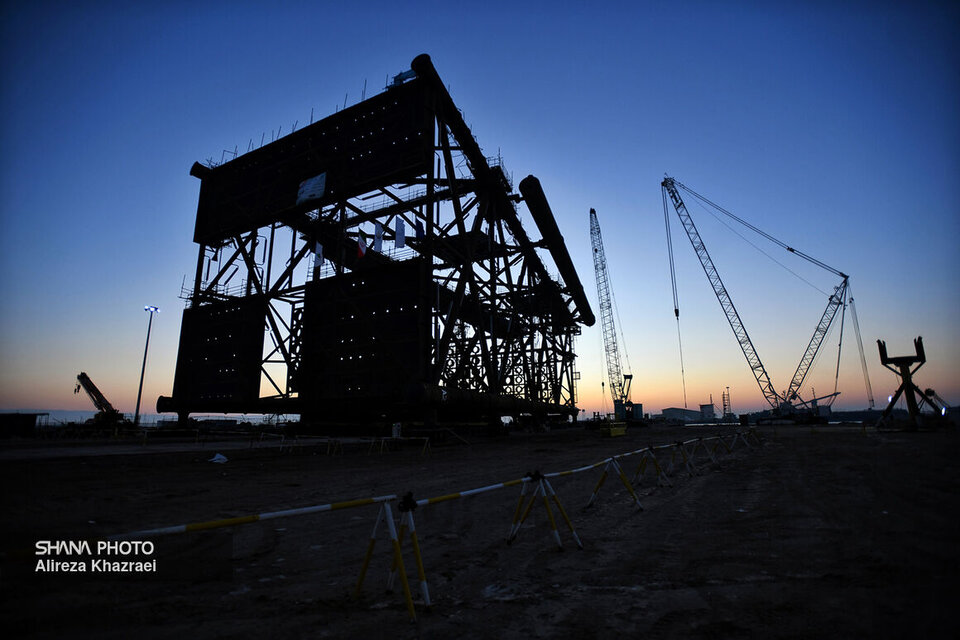The jacket and its belongings weigh 1.800 tonnes with its piles weighing 1,256 tonnes. It was built with a $16 million investment. If weather conditions remain favorable, the jacket will have been installed on its site before the end of the current calendar year in March 2025.
The Belal gas field lies about 40 km east of the South Pars gas field. It was discovered in 2003 by the National Iranian Oil Company (NIOC) Directorate of Exploration.
The agreement for the development of the Belal gas field was signed in September 2019 between Pars Oil and Gas Company (POGC) and Petropars. Construction of the wellhead jacket of the Belal gas field began in late May 2024, recording 1.3 million persons-hours of accident-free work.
Jacket 65m below the Seabed
Ehsan Mohammadi, manager of the Belal gas field development project, said in light of the national priority for developing joint oil and gas fields, this project is prioritized by POGC due to the necessity of boosting gas production capacity and overcoming energy imbalance in the country.
Construction and loading of the wellhead jacket is key to drilling wells and installing offshore installations for the Belal development. He said the jacket is destined to be installed 65 meters below the Persian Gulf bed.
The Belal gas field is to be developed in five packages. In addition to building and installing a wellhead jacket, drilling appraisal wells was done by Dana Drilling Co. in early 2023. Currently, building the top drive is underway by Iranian Offshore Engineering and Construction Company (IOEC) while Petropars Oilfield Services Co. (POSCO) is in charge of drilling development wells. Building an offshore pipeline and fiberoptics will be awarded in the near future.
Once developed, the Belal gas field would produce 14.2 mcm/d of gas and 10,000 b/d of condensate.
Belal Complexity
Mohammadi said Belal’s gas would be delivered by a 30-km pipeline to Platform 12A of South Pars before being sent to the refinery of SP12 via a subsea line.
Commenting on the differences between offshore and onshore gas field development, he said: “Development of offshore gas fields requires more sophisticated technology and equipment due to sour gas and high humidity. As the Belal field’s gas is sour, the field becomes more complicated to develop.”
Touching on the development of this sophisticated field by Iranian contractors, he said: “Earlier, an appraisal/exploration well was drilled by local experts on the site of the gas block.”
Mohammadi said that POGC had fully mastered the technology for offshore development, adding: “When we decided to install the jacket on the appraisal well drilled below the seabed, we knew that it was risky, but it would save us 300 days. Therefore, relying on the skills and expertise of local manpower, we were sure we would do it.”
“The Belal field has an oil and a gas section. The gas section has been assigned to POGC with Petropars handling the job as a general contractor,” he said.
Farshid Shahryari, director of the Belal project at Petropars, said seven more wells would be drilled in the field.
“After the jacket has been installed, the drilling rig would be moved there and in parallel, we would be building and installing the top drive, for which an agreement has been signed,” he said.
The Belal gas field lies 90 km southwest of Lavan Island and about 70 meters deep underwater. Shared by Iran and Qatar, it is estimated to hold 3 tcf of gas and more than 100 million barrels of condensate in place.


Your Comment